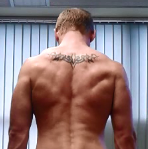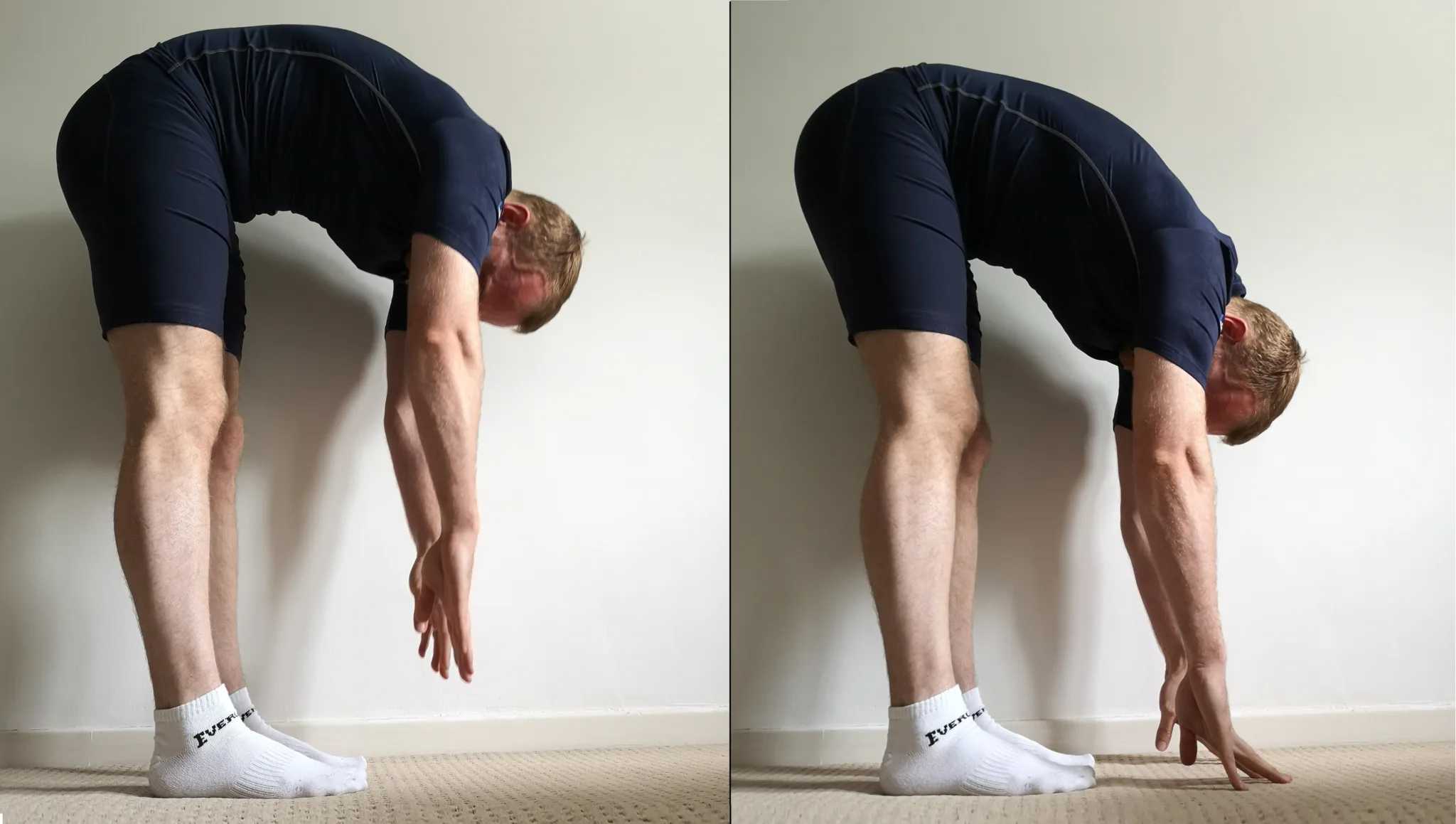
I’m in the process of improving my hamstring flexibility and wanted to share what I’ve learned. My method is to search the keywords on PubMed and look through interesting papers over the last 10 years. From there I use my Sports Science background to construct a training program that best reflects what the research shows to be effective.
Before I get into the papers I want to quickly go over how you might test your hamstring flexibility in the first place.
Method 1: Sit and Reach
- Make sure your muscles are warmed up before trying this.
- Go barefoot or in socks – any footwear will mean you’re not measuring accurately.
- Keep the legs straight, place one hand on top of the other and lean forward as much as you can.
- Don’t bounce! You are measuring the furthest distance you can maintain for 3 seconds, so bouncing is cheating.
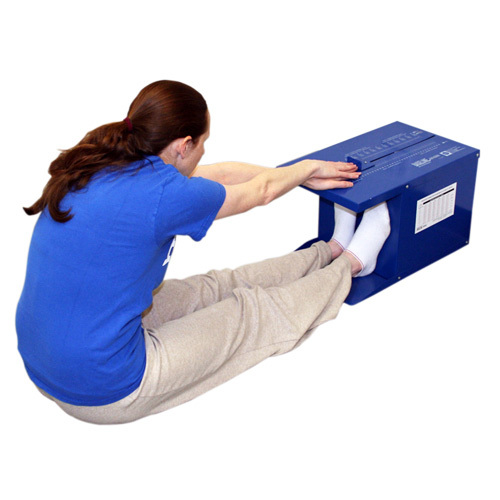
Image Source: athleticstuff.com
Method 2: Fingertip to Floor Distance
- This is effectively a Sit and Reach Test but at a 90 degree angle, so as above you should be barefoot or in socks, fully warmed up, have straight legs as you reach and avoid bouncing.
- Use a ruler or have someone assist you when measuring. It’s the distance from your longest finger to in line with the soles of your feet.
- A platform, box or step is only required if you can reach beyond your toes, otherwise doing this on the floor is fine. Distances beyond the soles of your feet are negative, meaning if you reach 3cm past your toes you would get a score of -3cm.
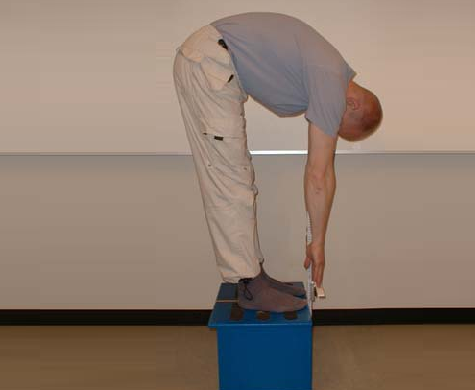
Image Source: researchgate.net
Method 3: Active Knee Extension Angle (Partner)
- Lie on the floor with the non-test leg straight on the ground and the test leg bent so the thigh is perpendicular to the floor.
- Without lifting the other leg, changing the angle of the thigh or tilting your pelvis back, allow your partner to extend your lower leg as much as is comfortable.
- Measurement is the maximum angle created between the upper and lower leg, often measured with an inclinometer (see device attached to person’s shin below).
- Remember to test both legs as people often find there’s a difference.
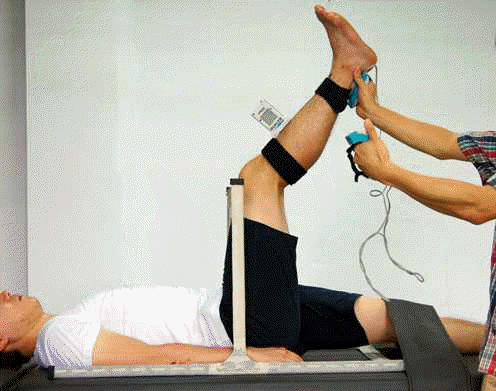
Image Source: e-sciencecentral.org
Method 4: Passive Straight Leg Raise (Partner)
- Similar to above, but the test leg starts next to the other leg and is kept straight while raised.
- Your partner should stop when you feel mild discomfort or pain, ensuring the leg does not bend in the mean time.
- Measurement is the angle the shin makes with the floor, again with either an inclinometer or goniometer.

Image Source: http://lumbar-spine-special-test.blogspot.com
What The Research Says
Now that we’re clear on the testing procedures, let’s dive right into the results.
- There was no significant difference between a 4 week stretching protocol and an 8 week one [1]. That would indicate that most of the benefits from a routine can be obtained in the first month.
- Also no significant difference between 30 and 60 seconds of stretching on immediate flexibility [2]. Another study found the duration of stretching made no difference as long as total duration of stretching was constant [3].
- Stretching once every day or twice every other day led to similar improvements to range of motion [4]. Another study found stretching 3 or 5 days per week had similar effects, and both had greater results than stretching once per week [5].
- Foam rolling is an effective way to improve flexibility, and to avoid discomfort with no greater benefit it’s best to limit each muscle group to 20-30 seconds [13] .

- Several studies looked at PNF, or contract-relax stretching, and found that 70% of maximal effort was optimal, though there was no significant benefit over other types of stretching [6] [7] [8] [9].
- A five minute warm up increased passive range of motion by around 10-15% for the next 90 minutes, though the effect started to wear off after 15 minutes [10]. The method used here was leg swings, something I personally find beneficial.
- Stretching after every session helped soccer players improve flexibility. Another study looked at grouping players into flexible and inflexible, and found the flexible group were on average 6% faster over short distances and could jump 10% higher [11] [12].
- Active stretching resulted in greater range of motion than passive stretching, and a month after the study the active stretchers retained much more of that range [14]. Here’s an example of an active hamstring stretch.
- Strength training in the lengthened hamstring position improved muscle length, while stretching alone did not [15].
- Using a daily jack-knife stretch for 10 x 5 second holds over 28 days improved average fingertip to floor distance by 22cm! [16]
Hamstring Stretching Routine
Foam Rolling (3x/wk)
Foam roll the piriformis, adductors, quadriceps, hamstrings and calves for 20-30 seconds each leg.
Weight Training (2x/wk)
Barbell Good Mornings, with a 3 second isometric hold at maximal range of motion. 3-4 sets of 6-8 reps.
Active Stretching (twice a day, 3x/wk)
- Warm up first. I recommend this warm up routine designed for running.
- 90-90 Active Hamstring Stretch – 2 x 30 seconds
- Downward Dog – 5 sets of 5 second holds
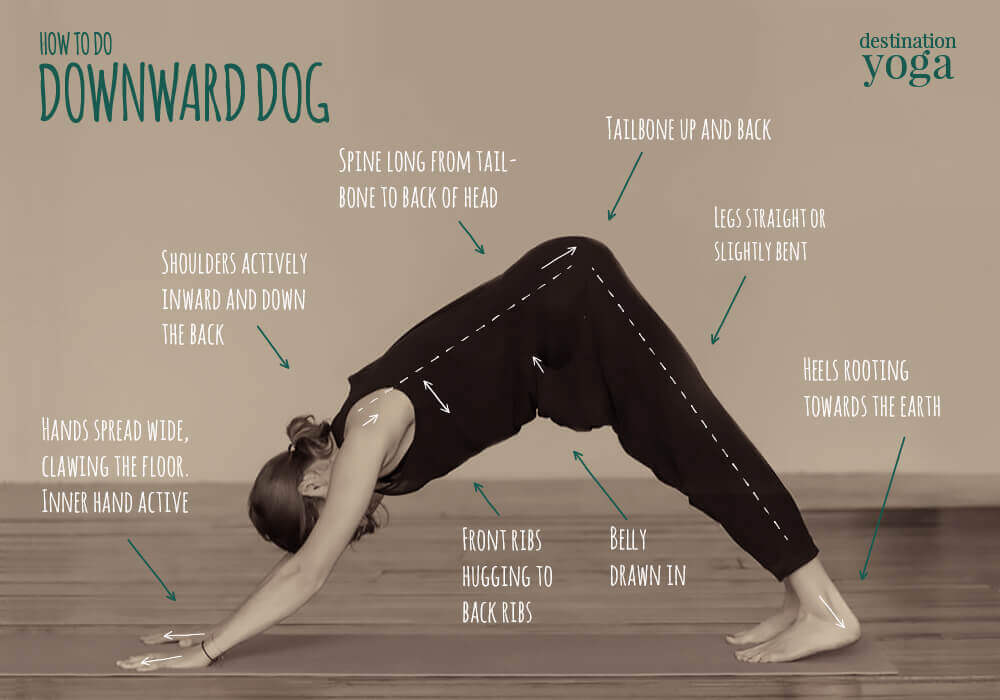
Image Source: destinationyoga.co.uk
With any luck you should see significant improvements in your hamstring flexibility within 2-4 weeks of introducing these practices. Best of luck!

